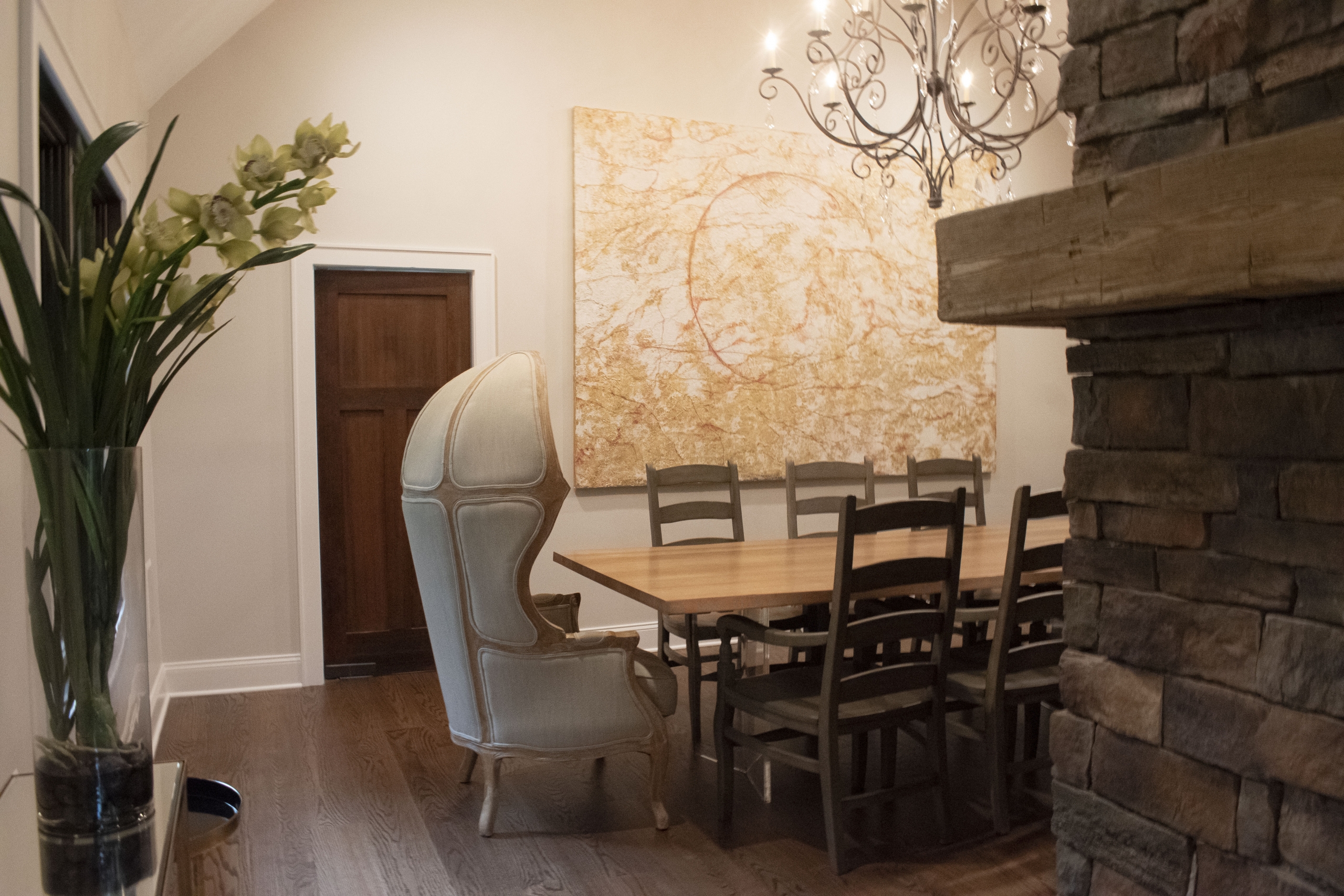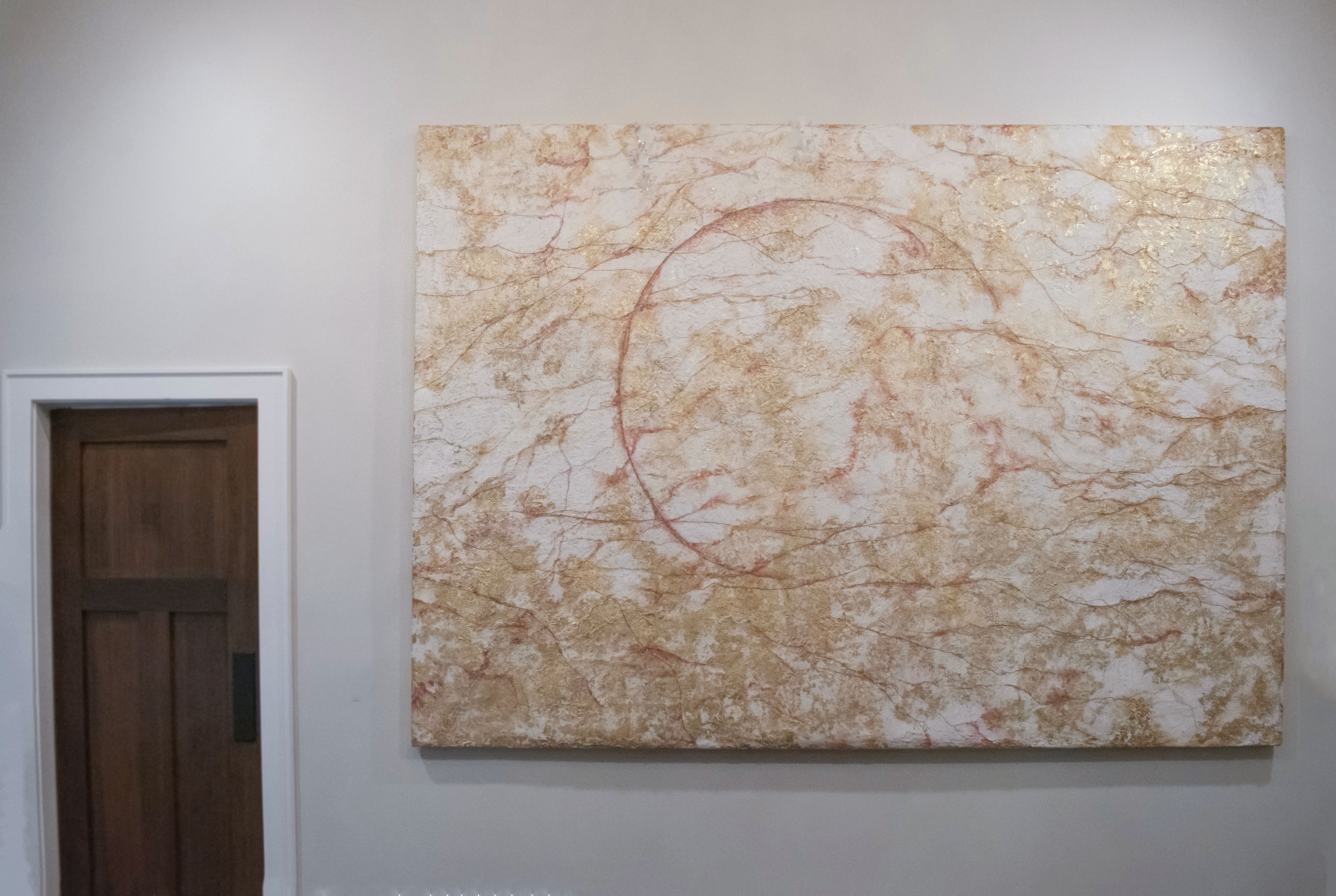Landscape of Life


“Art enables us to find ourselves and lose ourselves at the same time.” —Thomas Merton
This piece is called the landscape of life.
The canvas represents our life. We are built of tiny fibers of karma that are woven into a canvas fabric. The gold, which is a divine material, is evidently reflective; when we see gold, we see a reflection of our thoughts. Saffron, which is known as the spiritual thread, promotes and healing. Sandalwood, on the other hand, is symbolically used to calm the karmas down (anger, ego, greed, deceit). The sandalwood powder and saffron are opposites yet they work together to bring balance.
When I paint, I lose track of time. My mind becomes so focused on each detail that I zone out of my surroundings and into my own art world. And in that art world, I am free to explore and create. Sometimes, I look out at my window and realize the sun is starting to set when I began painting at sunrise. I guess it happens to the best of us!
At the same time, art has allowed me to explore what I am thinking and feeling at a moment’s notice. Through the craft, I have learned so much about myself as both a human being and an artist.
Landscape of Life
The imprint up and down of the landscape = is life
Raw materials:
Canvas: The canvas of our life. We are built of tiny fibers of karma that are woven into a canvas fabric.
Gold Leaf: Gold leaf has the properties of blocking negative energy. As an artist, using gold has a dual purpose, not only does is it a divine material but it is also reflective. When we see gold, we see a reflection of our thoughts.
Saffron: Saffron is known as the spiritual thread. It carries the power of fire. It has healing power and love.
Sandalwood: This is an auspicious material, that is symbolically used to calm the karmas down (anger, ego, greed, deceit). It has the power of compassion & recovery. Both Sandalwood powder and Saffron are opposites and they work together to bring balance.
Raksha Potli strings:– These red strings are with mantras = our most important one = Navkar Mantra Therefore by tying the red string, one is able to destroy one’s negative qualities and gain clarity. In this work, I have used Red cotton threads to symbolize the “Raksha Potli” sacred threads.
(Additional )By tying the red string, the blessings of Devis such as (Saraswati /Lakshmi) are received.
From the blessings of Saraswati receives fame and knowledge, from the blessings of Lakshmi one gets protection power from evils and wealth.
Lace:- Lace represents our compassion & empathy.
Cement: Cement texture represents strength & foundation.
Both Lace and cement work hand in hand, like yin and yang – one does not exist in the world without the other = symbolizing marriage.
Size: 108 length x 78 inches
108 is one of the most auspicious numbers in Jainism. Our navkarvali also has 108 beads, which represent all the qualities of the panch parmesthi.
This work was created in mind with balancing the distinct materials—in this case, lace, and cement.
Lace is delicate and fragile; it represents our compassion and empathy. Cement is hard and barren; it serves as strength and foundation. Despite their innate differences, the two work hand in hand to produce a beautiful piece of artwork. Like yin and yang, one does not exist in the world without each other.
This painting also reminds me of a map—except instead of green mountains, there are inclines covered with gold leaf, and instead of rushing blue water, there are rivers of red saffron.
Maps are supposed to guide us; as you admire the painting, let your mind be guided. Think about what you see or what you want to see. Think about what art means to you and how it has found its way in your life. Think about the painting in its entirety or the materials. Let your mind wander—you never know where you may end up.


